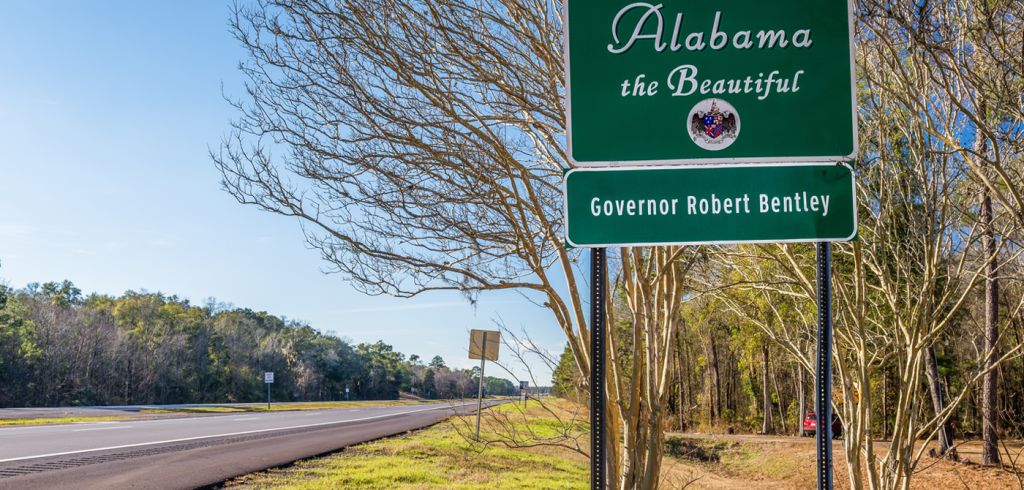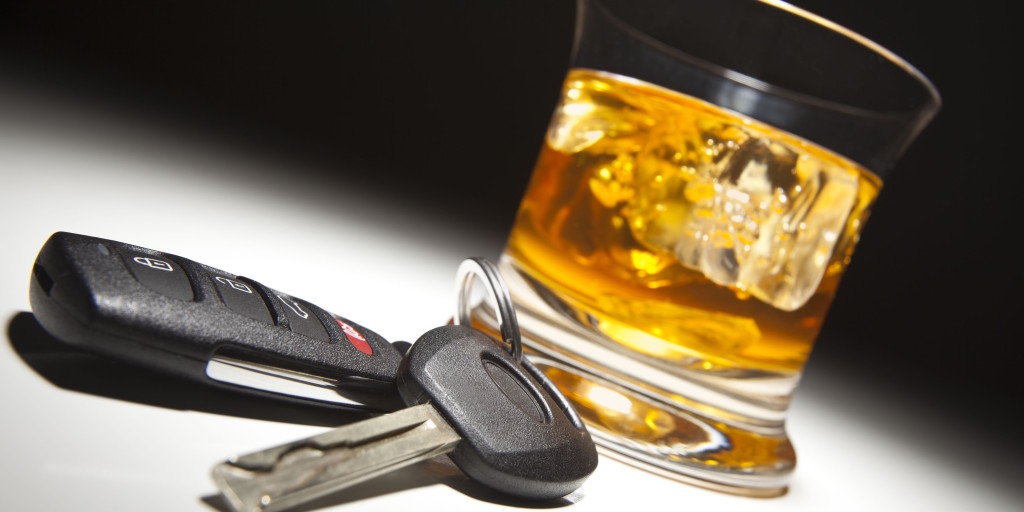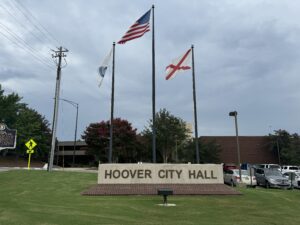Daniel Sutter: Are our highways less safe?

Highway fatalities have increased from under 33,000 in 2014 to 37,461 in 2016, before declining slightly in 2017. Many have speculated whether drivers distracted by smart phones have caused this increase. Before further restricting driving, we should examine the problem. The recent increase in fatalities is unsettling because driving has become safer over time. Fifty years ago, over 50,000 Americans died annually on the highways; the worst year was 1972 with 54,589 deaths, according to the National Highway Traffic Safety Administration (NHTSA). Vehicle miles driven have increased dramatically as the death toll has fallen. Indeed, fatalities per mile driven have fallen by 80 percent since 1966. If we still had 1966’s fatality rate with today’s 3.2 trillion miles driven, we would have had 176,000 highway deaths in 2017. Has driving truly become more deadly since 2014? The increase in fatalities might seem to answer this in the affirmative, but real world data never lies exactly on a smooth curve. Could the recent increases in fatalities just be random variation? The two largest year-to-year percentage increases in highway fatalities were in 2015 and 2016, a total 14 percent increase. And yet multi-year fatality increases have occurred since 1966, including four consecutive years in the late 1970s and five consecutive years in the 1990s. The 1970’s fatalities increase was 15 percent. The recent increase in fatalities is not entirely unprecedented. Thankfully, a very small percentage of accidents produce fatalities. If roads are more dangerous, we should also see increases in injuries and accidents. NHTSA injury totals go back only to 1988 and are much less accurate than fatalities data. Still, reported injuries increased 34 percent, or 800,000, between 2014 and 2016, including a 28 percent increase in 2016. The largest previous one-year increase in injuries was only 6.5 percent. Reliable nationwide totals on accidents are not available. Not all states have seen fatality increases. In Alabama fatalities rose 26 percent between 2014 and 2016. Rhode Island had a 63 percent increase in fatalities, and eight other states saw increases of 30 percent or more. Yet fatalities declined in three states and increased less than 5 percent in four more. Are cell phones more distracting in some states than others? Substantial differences in fatality rates exist across states. Between 2014 and 2017, South Carolina’s rate was more than two and a half times higher than Massachusetts’. Factors like rural vs. urban driving, highway type, and speed limits explain much of this variation, but making driving in all states as safe as in the safest states could save thousands of lives annually. The NHTSA also reports fatalities by vehicle type, which have increased by 12 and 13 percent for cars and light trucks. Motorcyclists and bicyclists (15 percent each) and pedestrians (22 percent) saw larger increases, even though drivers of cars and trucks seem more likely to be distracted by cell phones. The fatality increases for cyclists and pedestrians suggest another cause, or may combine drivers’ distractions and these individuals’ vulnerability. Cell phone use and texting have been around longer than we perhaps remember; Washington state banned texting and driving in 2007. According to NHTSA statistics, drivers’ cell phone use has fallen over the past decade, and fatalities fell 20 percent nationally between 2007 and 2014. New phones provide more ways to distract drivers, but why did cell phones start increasing fatalities only in 2015? Many scholars from different disciplines study highway safety, including yours truly. To date, published research has not really addressed the recent jump in fatalities. World events drive academic research, so research should soon start offering concrete insights. Highway fatalities continue to impose a heavy toll on the U.S. Even though the fatality rate has fallen 80 percent since 1966, the modest increase in fatalities since 2014 should concern citizens and experts. Fortunately fatalities fell 3 percent during the first half of 2018. Perhaps the increase from 2014 to 2016 was only a pause in the long-term improvement in highway safety. Daniel Sutter is the Charles G. Koch Professor of Economics with the Manuel H. Johnson Center for Political Economy at Troy University and host of Econversations on TrojanVision. The opinions expressed in this column are the author’s and do not necessarily reflect the views of Troy University.
U.S. traffic deaths jump by 10.4 percent in first half of 2016

U.S. traffic fatalities rose by an estimated 10.4 percent in the first half of this year, federal officials said Wednesday, and continued an upward trend that started in late 2014 as the economic recovery accelerated. The Transportation Department released the preliminary estimate at a conference where government agencies, the National Safety Council and other safety groups announced an ambitious goal of eliminating traffic deaths and injuries in the United States within the next 30 years. “We have an immediate crisis on our hands, and we also have a long-term challenge,” said Mark Rosekind, head of the National Highway Traffic Safety Administration. The sharp increase in deaths this year follows a 7.2 percent jump in 2015, when there were 35,092 traffic fatalities. For the first half of 2016, 17,775 people died on the road, compared with 16,100 over the same period a year earlier. The improving economy means people are doing more driving on U.S. roads than ever before. U.S. drivers put in a record 1.58 trillion miles on the road in the first half of this year, 3.3 percent more than during the same period in 2015, the Federal Highway Administration said this week. The Transportation Department said it is committing $1 million a year for the next three years for grants for the zero deaths campaign. The rapid introduction of self-driving cars and other advanced technologies may make it possible to achieve the elimination of traffic deaths, the department said in a statement. Fully autonomous vehicles hold the potential to eliminate human error, which is a factor in 94 percent of crashes, according to the department. The zero deaths idea was first adopted in Sweden in 1997 as a plan called Vision Zero. It has since been adopted elsewhere, including several U.S. cities. Republished with permission of The Associated Press.
Robert Bentley awards $3.7 million to improve Labor Day, holiday highway safety

Gov. Robert Bentley on Thursday awarded nearly $3.7 million to help keep Alabama roads safe during the upcoming Labor Day weekend and other major traveling holidays during the next year. Funds will be used by law enforcement agencies throughout the state to maintain a presence on highways including setting up checkpoints, increasing patrols on heavily traveled roads, and providing traffic monitoring. “I am proud to award these funds to increase safety on all of Alabama’s more than 100,000 miles of roadways,” Gov. Bentley said. “Highway safety is a very important part of our overall efforts to increase public safety. By increasing the number of troopers and police on the roads, we look to increase driver awareness and adherence to our traffic safety laws.” Bentley awarded $1.2 million to the Alabama Law Enforcement Agency to keep more troopers on the road during heavy traffic times. The remaining funds will be distributed among the four traffic safety offices in the state, which allocate funds to local police and sheriff’s departments for use in their jurisdictions. Allocations to each office are as follows: North central region: $686,577 East central region: $669,581 Southwest region: $604,631 Southeast region: $536,127 The funds also help support major traffic safety campaigns like “Click it or Ticket” and “Drive Sober or Get Pulled Over.” The Drive Sober campaign is now in full swing through Labor Day, with the aim of reducing highway injuries and deaths caused by impaired driving due to drugs or alcohol, and distracted driving. Funds were made available to the state from the National Highway Traffic Safety Administration and are being administered by the Alabama Department of Economic and Community Affairs (ADECA). “This program puts the funds into the hands of state and local law enforcement agencies who know exactly where patrols and police presence need to be,” ADECA Director Jim Byard Jr. said. “ADECA is pleased to partner with law enforcement across our state in this effort to reduce deaths and injuries on our state’s roads.”
Daniel Sutter: Drones, self-driving vehicles, and the future

Two firsts occurred recently for drones and self-driving vehicles. On June 30, the first highway death in a self-driving car occurred when a Tesla Model S on autopilot hit a tractor-trailer near Gainesville, Florida. Then in July, a Reno, Nevada, 7-Eleven conducted the first Federal Aviation Administration (FAA) approved drone delivery. The historic delivery included Slurpees, donuts, coffee, and chicken sandwiches. Drones and self-driving systems for vehicles are both emerging under Federal regulation. While we need rules governing these technologies, the government can also make rules to protect established commercial interests. Whether politics will bless these technologies or block them to protect established economic interests remains to be seen. So far regulators are allowing development. In June the FAA released its long-awaited rules for commercial drones, to replace the current system of special permits. Drones will have to be registered and operated by holders of a drone pilot license, with operation at night or out of the pilot’s sight restricted. Many commercial users seem ready to move forward under these rules. National Highway Traffic Safety Administration (NHTSA) director Dr. Mark Rosekind strongly supported self-driving vehicles last month in San Francisco. This was noteworthy, because although self-driving cars have had encouraging road tests, the inevitable fatal accident could have afforded an opportunity to apply regulatory brakes. Dr. Rosekind announced in San Francisco, “I can tell you that no one incident will derail the Department of Transportation and NHTSA from its mission to improve safety on the roads by pursuing new life saving technologies.” Drones and self-driving cars illustrate the never-ending economic clash between the past and the future. The successful economic practices of the past have built the established businesses of today. New products and technologies threaten established businesses. Life is good in America today, with a high standard of living, people living longer than ever, and the ability do things that would have been unimaginable 100 years ago. For the future to prevail over the past, we must be able to envision how a future that does not exist yet could be even better than today. Both drones and self-driving cars could significantly improve the future. The Association for Unmanned Vehicle Systems International projects that drones could generate $14 billion in economic value annually within three years. Such projections are often self-promoting hooey, but uses for drones in surveying and agriculture surely indicate enormous potential value creation. And I await drone package delivery from Amazon. The benefits of self-driving vehicles loom even larger. Over 30,000 fatalities and 2 million injuries occur on America’s highways annually. The NHTSA calculates that if we put a dollar value on all of the losses, auto accidents cost our nation $1 trillion a year. And 94% of traffic accidents are attributable to driver error. Even assuming an occasional crash, self-driving cars could potentially eliminate a majority of accidents. Self-driving cars could provide the handicapped or elderly mobility comparable to other Americans. Adults could consume alcoholic beverages without killing or injuring themselves or others when driving home. Americans drove 3 trillion miles in 2014, and these drivers’ time could be freed up to safely text, talk on the cell phone, or read. Self-driving technology could reduce costs in transportation, as 3.8 million people work as motor vehicle operators. Trucking has provided America millions of good jobs, but companies have been struggling to recruit younger drivers. Technology might avert a truck driver shortage and lower the price of many goods for consumers. The legal burdens the taxi industry has placed on ridesharing companies Uber and Lyft, however, illustrate why regulation might deny us the benefits of drones and self-driving vehicles. Cities have used regulation to protect existing taxi monopolies. Just recently, Austin, Texas, voted for regulations ending ride sharing service there. The NHTSA’s Dr. Rosekind may sincerely want to allow self-driving cars to develop. But numerous businesses threatened by self-driving vehicles (or drones) could seek to throttle the competition. If politicians side with the established interests, even the best intentioned regulators will not prevent regulation from being used to protect the past from the future. ••• Daniel Sutter is the Charles G. Koch Professor of Economics with the Manuel H. Johnson Center for Political Economy at Troy University and host of Econversations on TrojanVision. The opinions expressed in this column are the author’s alone and do not necessarily reflect the views of Troy University.
Allen Farley: Why judges shouldn’t disregard ignition interlock requirement for DUIs

Memorial Day weekend is one of the deadliest because of alcohol-related accidents, behind only the Fourth of July. Alabama has the opportunity to decrease repeat DUIs, but many in the judiciary are not adhering to the state law designed to make our roads safer. Prior to being elected to the Alabama Legislature in 2010, I was a law enforcement officer for 36 years. During those years I saw a glaring hole in how we deal with DUI offenders. The other side of the problem – family-destroying addiction – also became evident as my wife and I volunteered at the Salvation Army Drug and Alcohol Rehabilitation Center. That is why I agreed to be the House sponsor of the Ignition Interlock Bill, which passed overwhelmingly in 2014 and became law in July 2014. For those readers not familiar with ignition interlock, it’s a breathalyzer-controlled lock installed on the vehicle of a convicted DUI offender. If the user blows above a 0.02 percent BAC (blood alcohol content), the car won’t start. The new law we passed was a change to existing law, allowing offenders of different degrees to have an ignition interlock device instead of losing their license. The National Highway Traffic Safety Administration endorses that approach because license suspensions do not change behavior or protect against future drunk driving. This sounds like common sense, right? But there is a big problem with ignition interlock right now: Judges and courts in Alabama are refusing to implement the law, which is their duty. I do not know nor will I speculate why they are doing this, but the simple fact remains that they are. As a result, our roads are more dangerous and DUI recidivism rates continue to rise. You might ask why a former law enforcement officer would be in favor of the policy. The answer is simple. Taking a license away from an offender does not keep them from driving in general, and it certainly does not stop them from driving while drunk. Installing a device that won’t let them start their car, on the other hand, does both, according to study after study. Not only that, it allows the offender to be a contributing member of society because they still can drive to work, church, and the grocery store. Further, when judges properly implement the law, it will make our roads safer, and the numbers bear this out. Since mandating ignition interlock devices in New Mexico in 2005, the state’s drunk driving related fatalities are down 30 percent. Since Arizona’s interlock law went into effect in 2007, drunken driving deaths have dropped by a massive 46 percent. In the event you think not enough time has passed since the law was enacted, Mississippi’s ignition interlock legislation became law in October 2014. Since that time, about 1,200 ignition interlocks have been implemented. By contrast, Alabama’s new law went into effect four months earlier than Mississippi’s, yet roughly half the number of devices are being used. That’s even more shocking when you consider a form of ignition interlock was originally passed in Alabama in 2012, but loopholes were discovered making it necessary to pass a new law. In other words, Alabama actually had a three-year head start on our neighbor to the west. Will you join me in asking our judges to require ignition interlock devices for convicted drunken drivers, as required by law? It is not a sufficient excuse that offenders who broke our laws and endangered lives will have to drive a few miles to get an ignition interlock. It is not an acceptable excuse that the devices will cost lawbreakers a few dollars a day. There really is no excuse to not use ignition interlocks so we can save hundreds of lives each year. A law was passed that will make our roads safer and at the same time help reduce the rate of repeat offenses. Now let’s enforce it and see the positive benefits for the people of Alabama. State Rep. Allen Farley is in his second term in the Alabama House of Representatives where he represents Jefferson and Shelby Counties.


